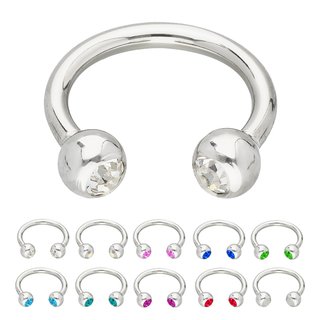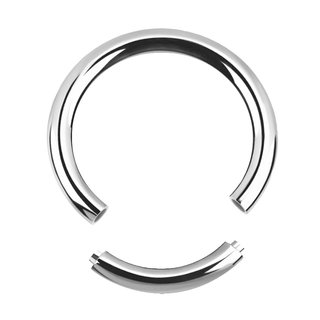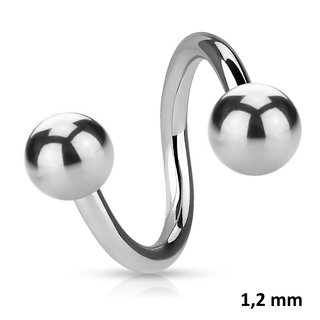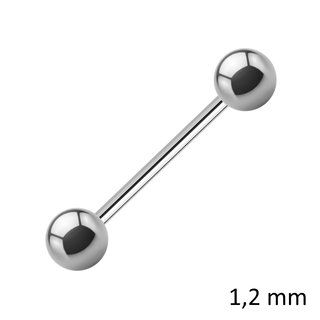Intimate Body Jewelry
Everbody's talking about intimacy
Not one for the faint of heart, intimate body piercings have been increasing in popularity over the course of the last century. Both men and women can get their genitals pierced and the variations available are simply mindblowing - and not just for the sheer aesthetic purposes, either!
Men's intimate body jewelry
For the willing male, there are a number of piercing options available. Possibly the most well known of these variants is the Prince Albert piercing, which is usually a captive bead ring or similar at the bottom of the penis, going through the urethra. The penis does, however, offer great potential for further piercings. The head of the penis can be pierced, either vertically or horizontally, with a straight barbell. For uncircumcised men, the foreskin can also be pierced - even multiple times if desired! The underside of the penis also shouldn't be forgotten, as men can get their frenum pierced. The frenum piercing is another of the more popular variations and also offers potential for different forms of genital body jewellery, including straight barbells, curved barbells or even captive rings. Finally, for those who'd prefer to stay closer to home, the scrotum can be pierced, or the very top of the penis close to the pubic area can be pierced. A pubic piercing does come with certain extra benefits for the female partner, too!
Women's intimate body piercings
The female anatomy is undeniably complex, but comes with great potential for various intimate body piercings. It's important to remember, though, that the healing time varies depending upon the which part of the genital area is pierced. Working from the outside, the first kind of piercing is the Christina or Nerfertiti piercing. This piercing is placed where the labia meet at the front of the woman's pubic area and usually takes around 3 to 4 months for full healing - though it's not a piercing all women can wear owing to their individual anatomy. The labia can also be pierced - either the larger, outer labia or the smaller, inner labia, though it should be noted that the outer labia need a little longer to heal. And finally, women have a number of clitoris piercings to choose from, but these depend heavily on the women's individual build. It's not possile for all woment to have the clitoris gland pierced, for example, as it's often too small. Clitoral hood piercings tend to be very popular and can be made either horizontally or vertically. Especially with women's intimate body piercings, it's really important for a professional piercer to conduct the piercing!
Close and Personal Care
Whether it's curve ball bars, straight barbells or even some of the more adventurous triangle shaped body jewellery you're looking forward to flaunting - you have to take good care of your intimates! For men as much as women, the general aftercare of genital piercings doesn't differ all too much from any other piercing aftercare. It's vital to keep the area clean, though avoid the temptation to overwash the area. Women should bear in mind that taking a bath for the first few weeks isn't a good idea and neither is soap. Avoid using any products with alcohol or strong aromas, as these will wipe out the good bacteria which help the healing process. Likewise, make sure you use paper towels to pat the area dry and - here's a little bit of bad news - avoid having sex for at least three weeks after getting your genitals pierced. Remember, though, that keeping the bed linen fresh will help the healing process!

Piercing Bananabell - Steel - Silver - 2.0mm to 6.0mm

Circular Barbell - Steel - Silver - 1.6mm

Circular Barbell - Steel - Silver - 2.0mm to 6.0mm

Ball Closure Ring - Steel - Silver - 1.6mm

Ball Closure Ring - Steel - Silver - 2.0mm to 6.0mm

Labret Piercing - Steel - Silver - 1.6mm

Labret Piercing - Steel - Silver - 2.0mm to 2.5mm

Segment Ring - Steel - Silver - 2.0mm to 6.0mm

Barbell Piercing - Steel - Silver - 2.0mm to 6.0mm
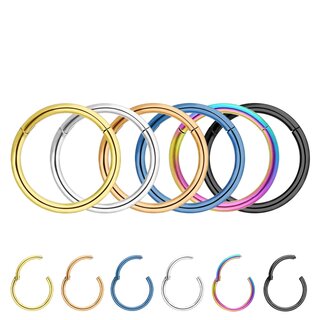
Segmentring-Clicker - Piercing - 5 Colors

Piercing Bananabell - Steel - Black - 2.0mm to 6.0mm

Circular Barbell - Steel - Black - 2.0mm to 6.0mm

Ball Closure Ring - Steel - Black - 1.6mm

Ball Closure Ring - Steel - Black - 2.0mm to 6.0mm

Labret Piercing - Steel - Black - 1.6mm

Labret Piercing - Steel - Black - 2.0mm to 2.5mm

Segment Ring - Steel - Black - 1.2mm









